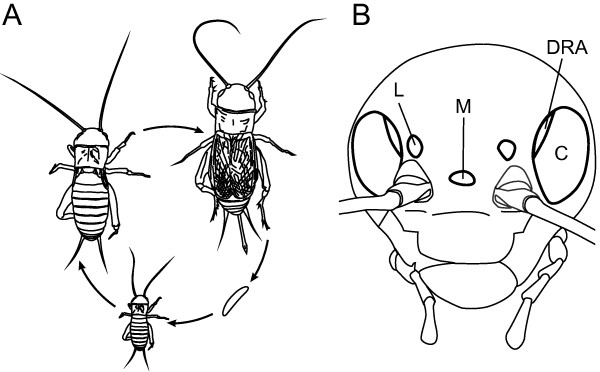Figure 1.
Life cycle and visual organs of the two-spotted cricket G. bimaculatus. (A) Crickets are hemimetabolous insects. They hatch from the egg as a larva that is a miniature version of the adult except for a lack of wings and functional reproductive organs. From one instar to the next, i.e. during molts, G. bimaculatus larvae grow larger, reaching adulthood after 8 to 11 molts with a weight gain of up to 1000 times [114]. (B) In both larvae and adults, the lateral ocelli (L) are positioned dorsal to the antennal bases, and the median ocellus (M) is located on the forehead. Each compound eye (C) features a specialized dorsal rim area (DRA) and a ventral band (not marked, as its exact position is not known). Eye size increases from one larval stage to the next by adding new ommatidia along a budding zone at the anterior margin of the eye [42-44].

